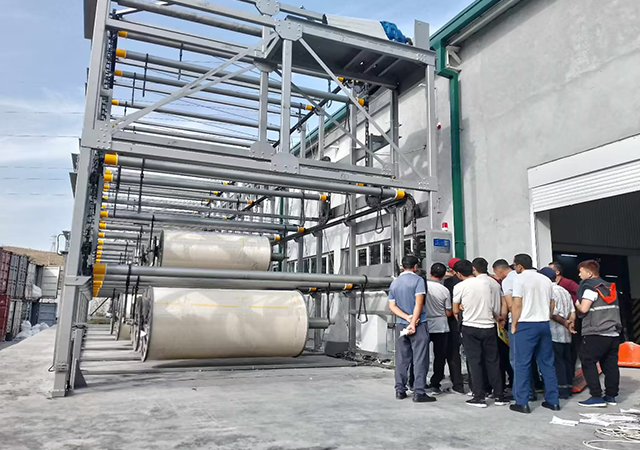A beam stacker is used to stack long beams of heavy structural elements used in construction. The machine is typically used in steel mills and fabrication plants, where they are used to transport beams from one location to another. The traditional beam stackers used in these plants were manually operated and required significant labor. However, with the advent of intelligent technology, beam stackers have become much more efficient and reliable.
Regular Inspection:
The initial step in maintaining a beam stacker involves conducting regular inspections to identify signs of wear and tear, such as cracks or corrosion. Components like the hydraulic system should be scrutinized for leaks, with damaged or worn parts promptly replaced to ensure optimal functionality.
Lubrication:
Proper lubrication is crucial for the beam stacker's efficient operation. Following manufacturer specifications, all moving parts, including chains, gears, and bearings, should be adequately lubricated. Caution should be exercised to avoid over-lubrication, which can result in damage and excessive wear.
Cleaning:
Regular cleaning is paramount to prevent the accumulation of dirt and debris, which could compromise the machine's integrity over time. Cleaning after each use helps identify areas of wear and tear that may require attention, contributing to the longevity of the equipment.
Electrical System Inspection:
Regular inspections of the electrical system, including batteries, cables, connections, and the control system, are necessary to ensure proper functionality. Immediate replacement of damaged or worn electrical components is crucial to prevent downtime and avoid accidents.

SUNTECH Beam Stacker Features:
SUNTECH's beam stacker boasts several features that contributing to its reliability and longevity:
- Raw materials are sourced from international standard steel giants.
- Guide rail selection based on beam weight for optimal strength.
- Beam loading shaft constructed from corrosion-resistant seamless steel for an effective service life of up to 15 years.
- Heavy-duty transportation chain suitable for high-intensity transportation.
- Precision components are processed by high-precision CNC machining for stability and accuracy.
- CNC cutting and welding qualified with a crack testing report for high efficiency and quality.
Artistic Appearance:
The patented shot blasting technology employed in the manufacturing process improves fatigue strength, prevents fatigue failure, and enhances fatigue life. The double rustproof guarantee consists of epoxy primer and surface metallic painting for effective corrosion resistance.
Operator Training:
Proper operator training is imperative for safe and efficient beam stacker operation. Operators should be trained to identify and report potential issues, ensuring they operate the machine safely. Regular refresher training should be provided to keep operators updated on the latest safety guidelines.
Emergency Preparedness:
Despite regular maintenance and training, emergencies can happen. Having an emergency response plan in place, including machine shutdown and area evacuation procedures, is essential. All operators should be well-versed in the emergency response plan to react effectively in case of unforeseen events.
Conclusion:
In conclusion, maintaining a beam stacker is crucial for its safe and efficient operation. Regular inspections, proper lubrication, cleaning, and electrical system inspections are key maintenance aspects. Operator training and emergency preparedness are equally critical to prevent accidents and ensure a safe working environment. Prioritizing beam stacker maintenance enhances its lifespan, improves overall performance, and contributes to increased productivity with reduced downtime.




